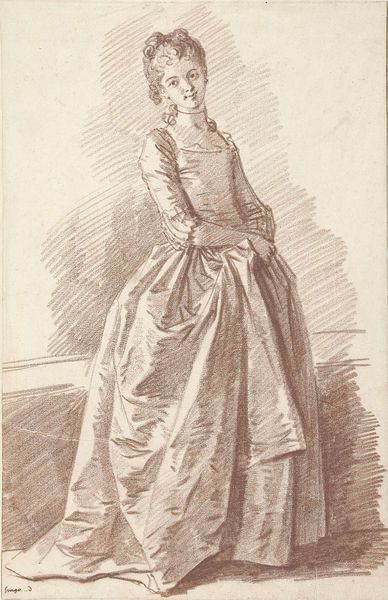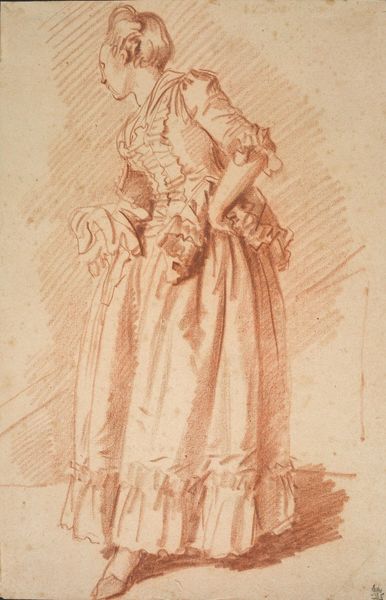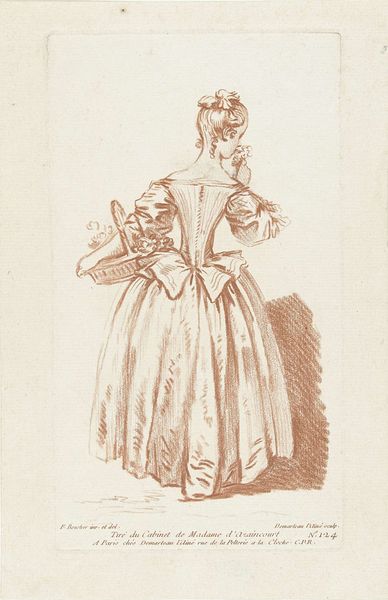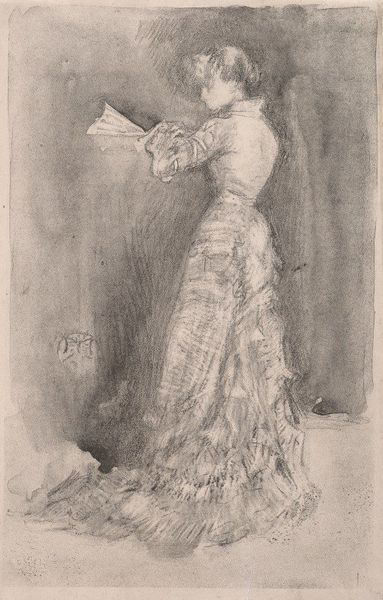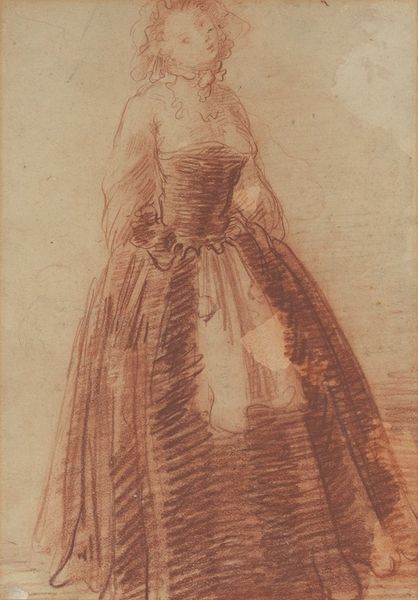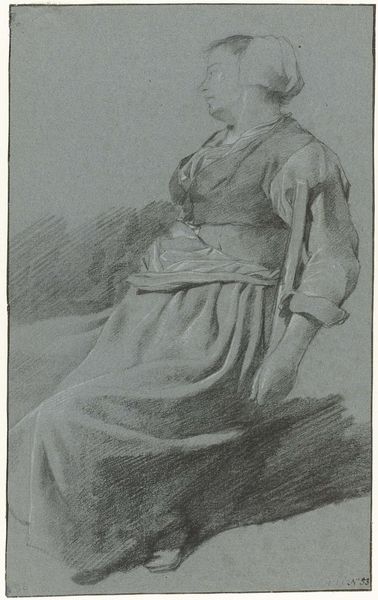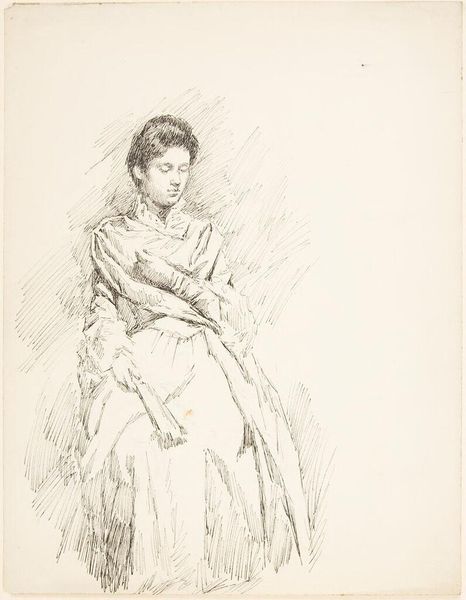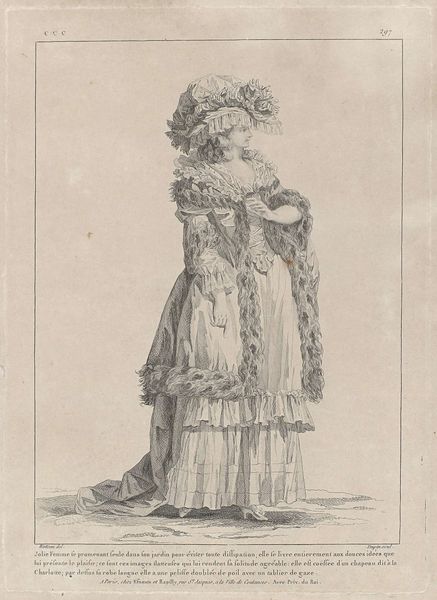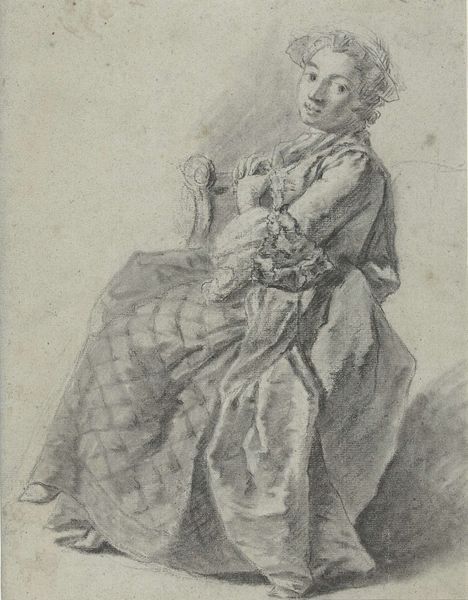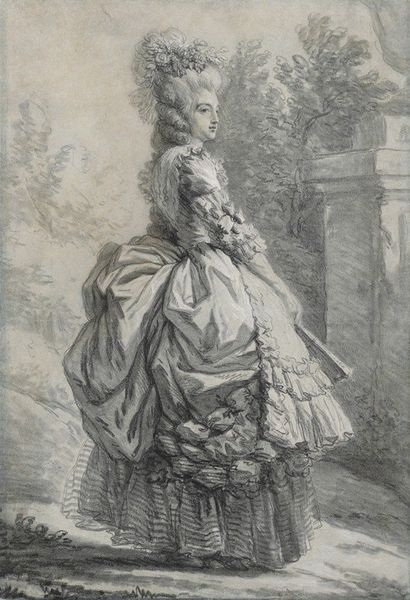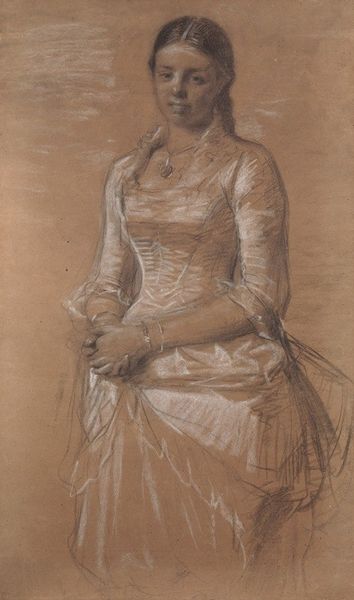
Staande jonge vrouw, met het gezicht en profil naar rechts 1775 - 1780
0:00
0:00
jeanhonorefragonard
Rijksmuseum
Dimensions: height 378 mm, width 242 mm
Copyright: Rijks Museum: Open Domain
Curator: Here we have Jean-Honoré Fragonard's "Standing Young Woman, in Profile Facing Right," a pencil drawing dating from approximately 1775 to 1780. It’s currently held in the Rijksmuseum. What strikes you first about this piece? Editor: The opulence! That gown speaks volumes, doesn’t it? The texture and volume achieved with pencil alone are extraordinary. But beyond the surface, I'm curious about who she is, what her social position might suggest about the realities of women in that era. Curator: It's the fabric that grabs my attention. Look at how Fragonard captures the light, the way it suggests the luxurious material of the gown. This wasn’t just any fabric; it speaks of a very specific socio-economic position tied directly to production and consumption practices. Editor: Exactly. Her posture, the very material of her dress, position her within a structure of societal expectations. What opportunities or constraints defined her life, given her status? Was she aware of the social issues swirling around her? How did the labor that created this elaborate garment affect other women? Curator: We can examine the supply chains of the textiles themselves, from the fields where flax or cotton were grown, to the factories in which it was spun into thread, to the hands of seamstresses responsible for every stitch. How was labor divided, and who profited most from each step? The final garment embodies so much of the complex system which it relied on for its production. Editor: The contrast is stark: her privileged life built upon the labor—often unseen—of countless others. Thinking about the politics inherent in portraiture during this time, does Fragonard's style—characterized by loose brushwork and dreamy sentimentality—serve to obfuscate those harsher realities? Curator: It's easy to romanticize Rococo, but we have to acknowledge the conditions that made such excess possible. Studying the materials, tools, and processes employed provides a concrete link to the era's economic structures. Editor: I appreciate you grounding my more speculative inquiry in the materiality of the piece. It’s a crucial reminder that these artworks are products of their time, shaped by power dynamics, resource availability, and a whole network of labor relations. Curator: Precisely. We've only scratched the surface today, but hopefully we've inspired listeners to look beyond the beauty and delve into the hands that brought it to life. Editor: Absolutely. And to question what isn’t readily visible. Whose stories remain untold in this single image?
Comments
No comments
Be the first to comment and join the conversation on the ultimate creative platform.
